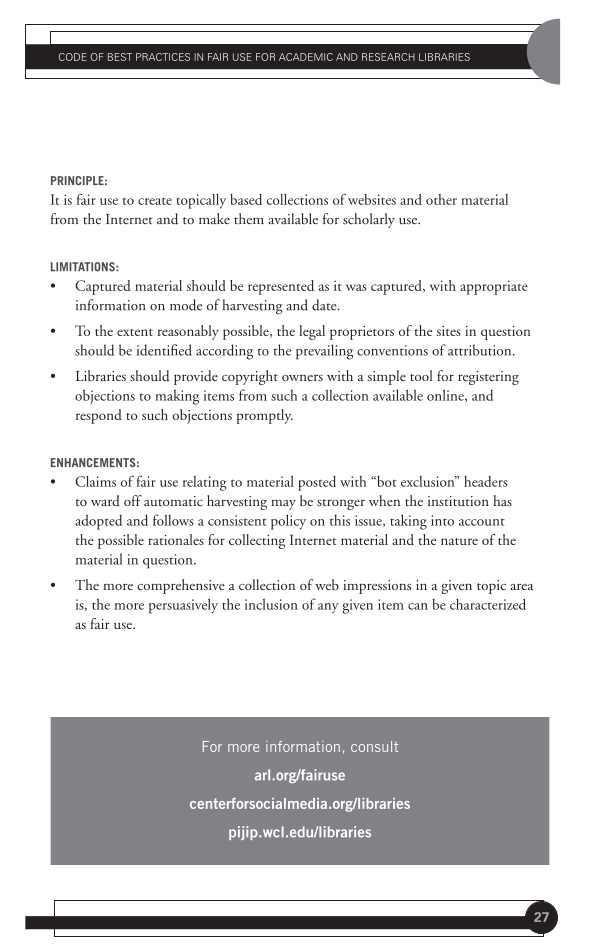CODE OF BEST PRACTICES IN FAIR USE FOR ACADEMIC AND RESEARCH LIBRARIES
27
PRINCIPLE:
It is fair use to create topically based collections of websites and other material
from the Internet and to make them available for scholarly use.
LIMITATIONS:
• Captured material should be represented as it was captured, with appropriate
information on mode of harvesting and date.
• To the extent reasonably possible, the legal proprietors of the sites in question
should be identified according to the prevailing conventions of attribution.
• Libraries should provide copyright owners with a simple tool for registering
objections to making items from such a collection available online, and
respond to such objections promptly.
ENHANCEMENTS:
• Claims of fair use relating to material posted with “bot exclusion” headers
to ward off automatic harvesting may be stronger when the institution has
adopted and follows a consistent policy on this issue, taking into account
the possible rationales for collecting Internet material and the nature of the
material in question.
• The more comprehensive a collection of web impressions in a given topic area
is, the more persuasively the inclusion of any given item can be characterized
as fair use.
For more information, consult
arl.org/fairuse
centerforsocialmedia.org/libraries
pijip.wcl.edu/libraries
27
PRINCIPLE:
It is fair use to create topically based collections of websites and other material
from the Internet and to make them available for scholarly use.
LIMITATIONS:
• Captured material should be represented as it was captured, with appropriate
information on mode of harvesting and date.
• To the extent reasonably possible, the legal proprietors of the sites in question
should be identified according to the prevailing conventions of attribution.
• Libraries should provide copyright owners with a simple tool for registering
objections to making items from such a collection available online, and
respond to such objections promptly.
ENHANCEMENTS:
• Claims of fair use relating to material posted with “bot exclusion” headers
to ward off automatic harvesting may be stronger when the institution has
adopted and follows a consistent policy on this issue, taking into account
the possible rationales for collecting Internet material and the nature of the
material in question.
• The more comprehensive a collection of web impressions in a given topic area
is, the more persuasively the inclusion of any given item can be characterized
as fair use.
For more information, consult
arl.org/fairuse
centerforsocialmedia.org/libraries
pijip.wcl.edu/libraries


































